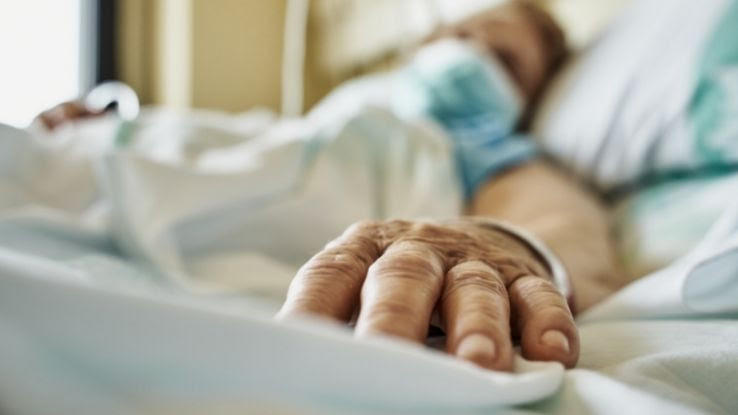The 10-Second Trick For Pacific Prime
The 10-Second Trick For Pacific Prime
Blog Article
9 Easy Facts About Pacific Prime Described
Table of ContentsHow Pacific Prime can Save You Time, Stress, and Money.The smart Trick of Pacific Prime That Nobody is Talking AboutNot known Incorrect Statements About Pacific Prime Not known Factual Statements About Pacific Prime The Basic Principles Of Pacific Prime

This is due to the fact that the data were accumulated for a period of solid financial efficiency. Of the estimated 42 million people that were uninsured, almost concerning 420,000 (about 1 percent) were under 65 years of age, the age at which most Americans end up being qualified for Medicare; 32 million were grownups between ages 18 and 65, around 19 percent of all grownups in this age; and 10 million were kids under 18 years old, regarding 13.9 percent of all youngsters (Mills, 2000).
These estimates of the number of individuals uninsured are created from the yearly March Supplement to the Current Population Survey (CPS), conducted by the Census Bureau. Unless or else kept in mind, nationwide estimates of people without medical insurance and proportions of the populace with different kinds of protection are based upon the CPS, one of the most widely utilized source of quotes of insurance policy protection and uninsurance prices.
Pacific Prime Can Be Fun For Anyone

Still, the CPS is especially helpful since it creates annual quotes reasonably quickly, reporting the previous year's insurance policy protection approximates each September, and because it is the basis for a regular collection of quotes for greater than two decades, enabling evaluation of trends in coverage gradually. For these reasons, as well as the considerable use the CPS in other studies of insurance protection that exist in this record, we depend on CPS estimates, with restrictions noted.

The estimate of the variety of uninsured people expands when a population's insurance coverage status is tracked for numerous years. Over a three-year period beginning early in 1993, 72 million people, 29 percent of the U.S. https://pacificprime.godaddysites.com/f/pacific-prime-your-gateway-to-international-health-insurance. population, lacked coverage for at the very least one month. Within a solitary year (1994 ), 53 million people experienced a minimum of a month without coverage (Bennefield, 1998a)
Six out of every 10 without insurance adults are themselves used. Functioning does enhance the possibility that one and one's household members will certainly have insurance coverage, it is not a guarantee. Also participants of households with 2 full time breadwinner have nearly a one-in-ten possibility of being uninsured (9.1 percent without insurance rate) (Hoffman and Pohl, 2000).
Pacific Prime Fundamentals Explained
New immigrants represent a significant proportion of people without medical insurance. One evaluation has actually attributed a considerable part of the current growth in the size of the U.S. uninsured population click over here to immigrants that got here in the nation between 1994 and 1998 (Camarota and Edwards, 2000). Current immigrants (those that involved the United States within the previous 4 years) do have a high rate of being uninsured (46 percent), however they and their kids make up simply 6 percent of those without insurance coverage across the country (Holahan et al., 2001).
The partnership between medical insurance and accessibility to care is well developed, as recorded later on in this chapter. The relationship between wellness insurance and wellness end results is neither straight neither straightforward, a considerable professional and health and wellness services research study literature links health insurance policy protection to enhanced access to care, better top quality, and enhanced personal and population wellness condition.
Levels of evaluation for taking a look at the effects of uninsurance. It concentrates specifically on those without any type of health insurance for any type of size of time.
The Greatest Guide To Pacific Prime
The problems encountered by the underinsured are in some aspects similar to those encountered by the uninsured, although they are usually much less serious. Health and wellness insurance, nonetheless, is neither needed nor sufficient to obtain accessibility to medical services. The independent and direct result of health and wellness insurance policy coverage on access to health solutions is well established.
Others will obtain the health treatment they need also without medical insurance, by paying for it expense or seeking it from carriers who offer treatment free or at highly subsidized prices. For still others, health and wellness insurance alone does not make sure receipt of treatment due to other nonfinancial barriers, such as an absence of healthcare companies in their area, restricted accessibility to transportation, illiteracy, or linguistic and social distinctions.
The 4-Minute Rule for Pacific Prime
Formal study concerning uninsured populations in the United States dates to the late 1920s and early 1930s when the Board on the Price of Healthcare produced a series of reports regarding funding physician office check outs and hospital stays. This concern became significant as the numbers of medically indigent climbed during the Great Anxiety.
Report this page